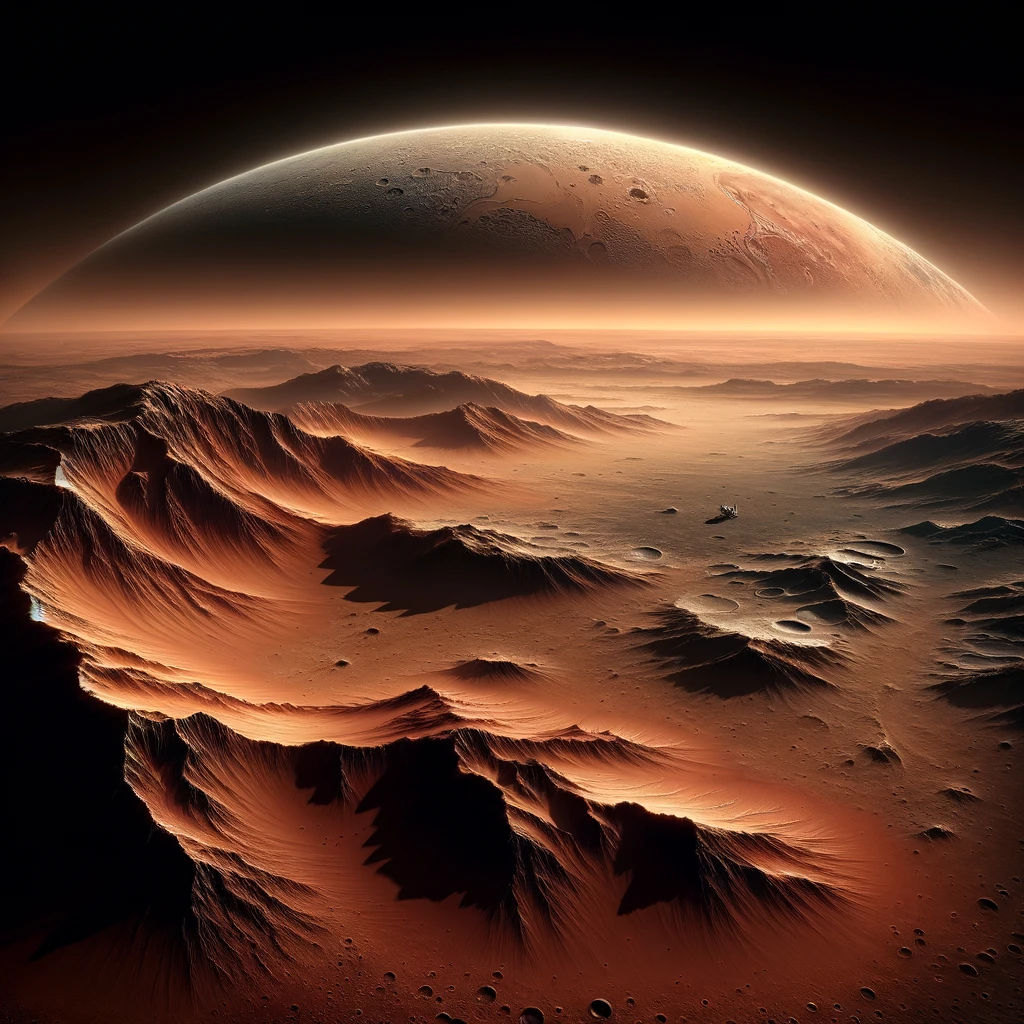Introduction
Mars, our neighboring planet in the solar system, has long captivated human imagination and scientific curiosity. Often referred to as the “Red Planet” due to its distinct reddish appearance, Mars bears the most resemblance to Earth compared to any other planet in our solar system. This article delves into the intriguing world of Mars, discussing its physical characteristics, the history of Mars exploration, and the future prospects of human colonization.
Understanding Mars
Physical Characteristics
Mars is the fourth planet from the Sun and the second smallest in our solar system, with a diameter just over half that of Earth. Its surface is home to both the highest mountain and the largest canyon known in the solar system: Olympus Mons, a shield volcano three times the height of Mount Everest, and Valles Marineris, a system of canyons over 4,000 km long. The Martian atmosphere is thin, composed primarily of carbon dioxide, with traces of nitrogen and argon. The planet’s red color comes from iron oxide, or rust, on its surface.
Climate and Seasons
The Martian climate is much colder than Earth’s, with average temperatures around -80 degrees Fahrenheit (-62 degrees Celsius). However, temperatures can vary widely, from -195 degrees F (-125 degrees C) near the poles during winter to 70 degrees F (20 degrees C) at noon near the equator. Mars experiences seasons like Earth, due to its tilted axis, but they last twice as long because Mars takes about 687 Earth days to orbit the Sun.
Mars Exploration: A Historical Overview
The fascination with Mars has led to numerous missions by various space agencies. The Viking 1 and 2 missions in the 1970s were the first to land on Mars, providing a wealth of information about the planet. In recent decades, rovers such as Spirit, Opportunity, and Curiosity have explored Mars’ surface in great detail, studying its geology, climate, and potential for past life.
The Mars Science Laboratory mission, with the Curiosity Rover, has been analyzing samples of rocks and soil to understand the planet’s habitability. The more recent Perseverance rover, part of NASA’s Mars 2020 mission, is exploring the planet’s surface, searching for signs of past microbial life and collecting samples for future return to Earth.
The Future: Mars Colonization
The prospect of human colonization of Mars has moved from the realm of science fiction to that of potential reality, thanks to advancements in space technology. SpaceX, NASA, and other international space agencies are actively working on plans for manned missions to Mars, possibly within the next decade. These missions aim to establish sustainable human presence on the planet, which would be a monumental step in human history and could pave the way for long-term colonization and exploration of the solar system.
Challenges and Opportunities
Colonizing Mars presents significant challenges, including the need for long-duration space travel, life support systems, and protection from radiation. However, the potential scientific breakthroughs and the opportunity to become a multi-planetary species are immense. Research into Mars’ past habitability and the possibility of terraforming the planet for human habitation are ongoing, with the hope of unlocking secrets about our own planet and the broader universe.
Conclusion
Mars remains one of the most intriguing objects in our celestial neighborhood, offering profound insights into the past, present, and future of our solar system. The continued exploration and potential human colonization of Mars represent the pinnacle of human ingenuity and the spirit of exploration, promising to expand our frontiers and challenge our understanding of our place in the cosmos.
